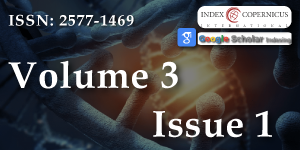Human mesenchymal stem cells conditioned media promotes the wound healing process - An in vitro study
Main Article Content
Abstract
Mesenchymal stem cells (MSCs) conditioned medium (CM) has a promising prospect towards skin regeneration. Therefore, human dental pulp and adipose stem cells (DPSCs and ADSCs) were isolated, propagated and evaluated for their stemness and genetic stability over time in culture before making CM. We aimed to characterize the applicability of lyophilized ADSCs and DPSCs derived CM (AD-CM and DP-CM) at 5 mg, 10 mg and 20 mg for wound healing process. The ability of wound closure was assessed by direct human dermal fibroblast cell scratch assay, treated with variable concentrations of AD-CM and DP-CM in vitro. Additionally, we also assessed the expression of different cytokines and growth factors secreted from ADSCs and DPSCs in the CM relevant to the wound healing by cytokine array analysis. Our data demonstrates a significant effect of both the AD-CM and DP-CM in wound healing within 24 hrs compared to that in control.
Article Details
Copyright (c) 2019 Jain RK, et al.

This work is licensed under a Creative Commons Attribution 4.0 International License.
The Journal of Stem Cell Therapy and Transplantation is committed in making it easier for people to share and build upon the work of others while maintaining consistency with the rules of copyright. In order to use the Open Access paradigm to the maximum extent in true terms as free of charge online access along with usage right, we grant usage rights through the use of specific Creative Commons license.
License: Copyright © 2017 - 2025 |  Open Access by Journal of Stem Cell Therapy and Transplantation is licensed under a Creative Commons Attribution 4.0 International License. Based on a work at Heighten Science Publications Inc.
Open Access by Journal of Stem Cell Therapy and Transplantation is licensed under a Creative Commons Attribution 4.0 International License. Based on a work at Heighten Science Publications Inc.
With this license, the authors are allowed that after publishing with the journal, they can share their research by posting a free draft copy of their article to any repository or website.
Compliance 'CC BY' license helps in:
| Permission to read and download | ✓ |
| Permission to display in a repository | ✓ |
| Permission to translate | ✓ |
| Commercial uses of manuscript | ✓ |
'CC' stands for Creative Commons license. 'BY' symbolizes that users have provided attribution to the creator that the published manuscripts can be used or shared. This license allows for redistribution, commercial and non-commercial, as long as it is passed along unchanged and in whole, with credit to the author.
Please take in notification that Creative Commons user licenses are non-revocable. We recommend authors to check if their funding body requires a specific license.
Su L, Zheng J, Wang Y, Zhang W, Hu D. Emerging progress on the mechanism and technology in wound repair. Biomed Pharmacother.2019;117:109191.PubMed: https://www.ncbi.nlm.nih.gov/pubmed/31387187
Jin Q, Yuan K, Lin W, Niu C, Ma R. Comparative characterization of mesenchymal stem cells from human dental pulp and adipose tissue for bone regeneration potential. Artif Cells Nanomed Biotechnol.2019;47:1577-1584. PubMed: https://www.ncbi.nlm.nih.gov/pubmed/31027424
Marei MK, El Backly RM. Dental Mesenchymal Stem Cell-Based Translational Regenerative Dentistry: From Artificial to Biological Replacement. Front Bioeng Biotechnol. 2018;6:49. PubMed: https://www.ncbi.nlm.nih.gov/pmc/articles/PMC5941981/
Shingyochi Y, Orbay H, Mizuno H. Adipose-derived stem cells for wound repair and regeneration. Expert Opin Biol Ther. 2015;15:1285-1292. PubMed: https://www.ncbi.nlm.nih.gov/pubmed/26037027
Hocking AM, Gibran NS. 2010. Mesenchymal stem cells: paracrine signaling and differentiation during cutaneous wound repair. Exp Cell Res. 2010;316:2213-2219.PubMed: https://www.ncbi.nlm.nih.gov/pubmed/20471978
Jayaraman P, Nathan P, Vasanthan P, Musa S, Govindasamy V. Stem cells conditioned medium: a new approach to skin wound healing management. Cell Biol Int. 2013;37:1122-1128. PubMed: https://www.ncbi.nlm.nih.gov/pubmed/23716460
Sagaradze G, Grigorieva O, Nimiritsky P, Basalova N, Kalinina N, et al. Conditioned Medium from Human Mesenchymal Stromal Cells: Towards the Clinical Translation. Int J Mol Sci. 2019;20.PubMed: https://www.ncbi.nlm.nih.gov/pmc/articles/PMC6479925/
Liang CC, Park AY, Guan JL. in vitro scratch assay: a convenient and inexpensive method for analysis of cell migration in vitro. Nat Protoc. 2007;2:329-333. PubMed: https://www.ncbi.nlm.nih.gov/pubmed/17406593
Vizoso FJ, Eiro N, Cid S, Schneider J, Perez-Fernandez R. Mesenchymal Stem Cell Secretome: Toward Cell-Free Therapeutic Strategies in Regenerative Medicine. Int J Mol Sci. 2017;18. PubMed: https://www.ncbi.nlm.nih.gov/pubmed/28841158
Kim JH, Jung M, Kim HS, Kim YM, Choi EH. Adipose-derived stem cells as a new therapeutic modality for ageing skin. Exp Dermatol. 2011;20:383-387.PubMed: https://www.ncbi.nlm.nih.gov/pubmed/21355887
Mendicino M, Bailey AM, Wonnacott K, Puri RK, Bauer SR. MSC-based product characterization for clinical trials: an FDA perspective. Cell Stem Cell. 2014;14:141-145. PubMed: https://www.ncbi.nlm.nih.gov/pubmed/24506881
Park JW, Hwang SR, Yoon IS. Advanced Growth Factor Delivery Systems in Wound Management and Skin Regeneration. Molecules. 2017;27;22. PubMed: https://www.ncbi.nlm.nih.gov/pubmed/28749427
Simone TM, Longmate WM, Law BK, Higgins PJ. Targeted Inhibition of PAI-1 Activity Impairs Epithelial Migration and Wound Closure Following Cutaneous Injury. Adv Wound Care (New Rochelle). 2015;1;4:321-328. PubMed: https://www.ncbi.nlm.nih.gov/pmc/articles/PMC4440983/
Tello-Montoliu A, Patel JV, Lip GY. Angiogenin: a review of the pathophysiology and potential clinical applications. J Thromb Haemost. 2006;4:1864-1874. PubMed: https://www.ncbi.nlm.nih.gov/pubmed/16961595
Werner S, Grose R. Regulation of wound healing by growth factors and cytokines. Physiol Rev. 2003;83:835-870. PubMed: https://www.ncbi.nlm.nih.gov/pubmed/12843410

